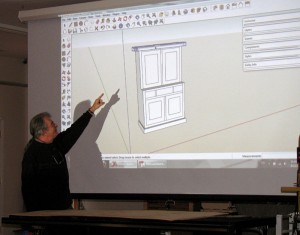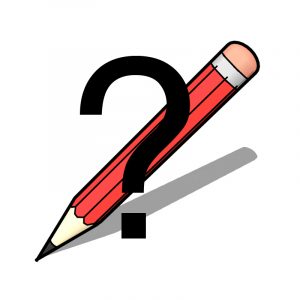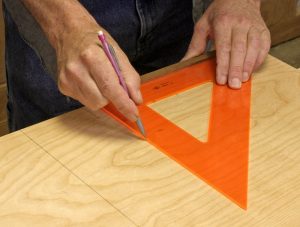We may receive a commission when you use our affiliate links. However, this does not impact our recommendations.
As in all creative endeavors, it’s important to think “outside the box” as much as possible in your woodworking. I mean all boxes – from small jewelry boxes to big box home centers – but for this post I want to focus on a typical woodworking tool box. I have met no woodworker who does this better than Robert Lang. Bob refuses to limit the contents of his tool box to tools you can find at a woodworking store or home center. As a result, he saves money and gets to be more creative than your average Joe Joiner.
Here are the top 3 “not exactly” woodworking tool tip examples I have found so far:
 1. SketchUp. I did not quite understand the value of SketchUp as a woodworking tool until I saw Bob’s presentation at the Woodworking in America conference. I had spent some time with existing SketchUp models, orbiting around them and hovering over various on-screen buttons to see what happened, but I hadn’t witnessed the creation of a project with this software. Creating dimensioned boards is as simple as drawing a rectangle, then using the push/pull button to “lift” the 3rd dimension out of the original plane. Copy the piece a few times and you’ve got all the legs of your table or sides of your case. That’s a lot faster than drawing by hand.
1. SketchUp. I did not quite understand the value of SketchUp as a woodworking tool until I saw Bob’s presentation at the Woodworking in America conference. I had spent some time with existing SketchUp models, orbiting around them and hovering over various on-screen buttons to see what happened, but I hadn’t witnessed the creation of a project with this software. Creating dimensioned boards is as simple as drawing a rectangle, then using the push/pull button to “lift” the 3rd dimension out of the original plane. Copy the piece a few times and you’ve got all the legs of your table or sides of your case. That’s a lot faster than drawing by hand.
Where do you get SketchUp? It’s a free download for any computer from Google. Just search “SketchUp.” And visit our own tutorials page for a wealth of information on how to use it.
 2. Pencils and crayons. Bob is not only a woodworking software whiz. He can also wield a mean pencil or crayon. Read his blog post on this topic by clicking here. The only thing I would add is that, in a pinch, you can certainly substitute one of your nephew’s small crayons for the jumbo variety that you find at the home center. The essential point is that if you use these simple tools correctly at the very start of your projects, you’ll save a lot of time and material.
2. Pencils and crayons. Bob is not only a woodworking software whiz. He can also wield a mean pencil or crayon. Read his blog post on this topic by clicking here. The only thing I would add is that, in a pinch, you can certainly substitute one of your nephew’s small crayons for the jumbo variety that you find at the home center. The essential point is that if you use these simple tools correctly at the very start of your projects, you’ll save a lot of time and material.
 3. Drafting squares. Finding a good square is a surprisingly common problem for woodworkers. Given that we are always cutting square lines, you would think that every home center and woodworking tool store has at least one high-quality square in stock. That’s not always the case. Bob has an elegant solution to this problem in his post on the use of an architect’s plastic drafting square to quickly create a large square suitable for woodworking.
3. Drafting squares. Finding a good square is a surprisingly common problem for woodworkers. Given that we are always cutting square lines, you would think that every home center and woodworking tool store has at least one high-quality square in stock. That’s not always the case. Bob has an elegant solution to this problem in his post on the use of an architect’s plastic drafting square to quickly create a large square suitable for woodworking.
You can find the plastic squares at office or art supply stores.
So what are you doing these days to think outside the woodworking tool box? Tell us your favorite solutions in the comments section!
–Dan Farnbach
Here are some supplies and tools we find essential in our everyday work around the shop. We may receive a commission from sales referred by our links; however, we have carefully selected these products for their usefulness and quality.










All of your “out of the box items” are actually in the box, save the crayon. Sketch-up, is nothing more than a CAD program, derived from paper, pencil and other tools like #3 pictured–drafting squares used in drafting. For me, all of the three (4 including the crayon) are tools. Others might include and I have used:
White pencil for dark exotic wood marking, after using a marking knife.
Circle or elliptical templates.
Dividers that double as a marking tool that also holds a pencil, like the Starrett #92.
Chalk